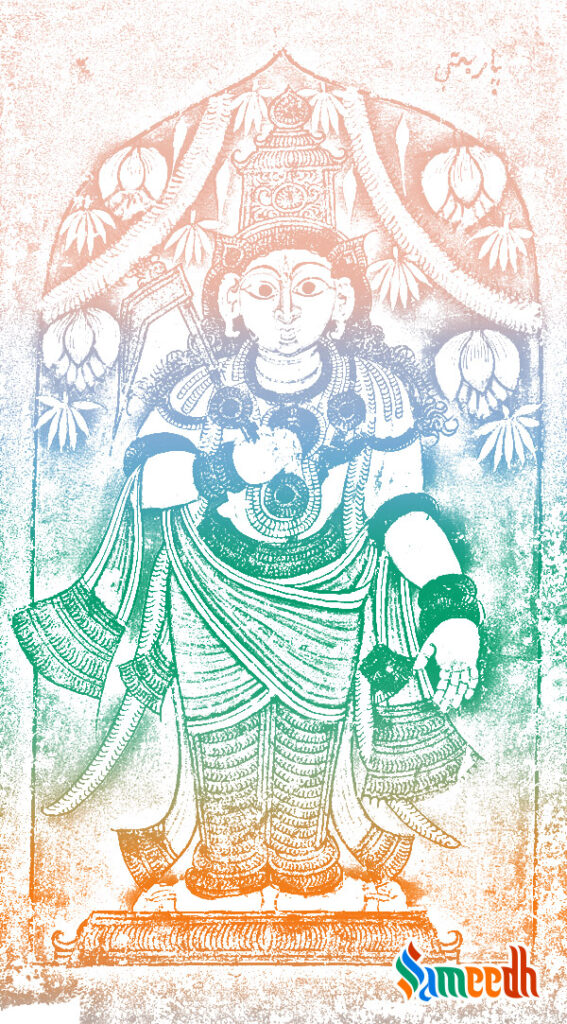Balram is the elder brother of Lord Shree Krushna. He is believed to be an avatar of the serpent king Adi Shesh.

Bhagwan Balram is the elder brother of Bhagwan Shree Krushna. He is also referred to as Balbhadra. As per the Dwaipayan Vyas Mahabharat, Bhagwan Balram is believed to be an avatar of the serpent king Adi Shesh or Sheshnaag, who carries the entire universe on his hood.
Story of His birth
Princess Devki’s cruel king brother Kans was determined to kill all of his sister’s children as a result of a prophecy that Devki’s eighth child would kill him thus; Kans imprisoned Devki and her husband Vasudev before killing each of their unborn children. Devki grew concerned for her safety when she discovered she was pregnant for the seventh time with a divine child. Because of Devki’s exceptional pregnancy glow, he thought maybe it is the seventh child that is going to kill him. On one hand, he was planning to kill the seventh child of Devki and on the other hand, Bhagwan Vishnu, who was watching over the entire play from His abode, transferred the unborn child of Devki into Vasudev’s first wife Rohini’s womb, by His Yogmaya. As a result, Bhagwan Balram also is known as Sankarshan, which means ‘transfer from the womb’. Balram was born to Rohini and raised by her. The child was formally named as Ram, but due to his exceptional strength, he was known as Balram, Balbhadra and Baldev. Later on, he was married to Revti, who was the daughter of King Kakudmi. They were blessed with three children, one daughter named Vatsala and two sons named Nishatha and Ulmuk.
Personality and characteristics of Bhagwan Balram
Bhagwan Balram is believed to be of fair complexion and wearing dark blue clothes, hence he is also known as the Nilvastra. He fights with a hal (plough), khetak (club), and musal (pestle). He is depicted as a god of might, dominance, fertility, and agriculture. In images, he is usually seen holding a sword, shield, pitcher, and cup. Bhagwan Balram was very brave since his childhood and had killed the two wrestlers Pralamb and Mushtik, who were sent by a king to kill Him and Bhagwan Shree Krushna. He also killed an Asur named Dhenuk, who was sent by Kans. While Bhagwan Shree Krushna was killing the evil king Kans, Bhagwan Balram killed Kalvakra, who was Kans’s commander. After killing Kans, Bhagwan Balram and Shree Krushna proceeded to Rishi Sandipani’s ashram in Ujjain to study.
Bhagwan Balram during the Mahabharat War
The story goes that Bhagwan Balram taught the technique of fighting with a mace to both Duryodhan and Bhim, who were rival cousins. Balram, who had equal compassion for both sides, made the decision to remain impartial when war broke out between the Kauravs and the Pandavs. In the end, Bhimhit Duryodhan with his mace by striking him beneath the navel with his mace. Since it was against the rules of the mace fight to hit anyone below navel, Bhagwan Balram got furious towards Bhimand wanted to kill Bhim but, Bhagwan Shree Krushna reminded him of the vow that Bhimhad taken to kill Duryodhan by hitting the same thigh that he wanted Draupadi to sit. Upon being reminded of the vow, Bhagwan Balram calmed down and went away from the battleground.
He passed away in a meditative state
According to the Bhagavat Puran, Balram took part in the war that resulted in the abolition of the remaining Yaduvansh, saw Bhagwan Shree Krushna disappear hence; he could not bear the separation from His beloved brother so he sat quietly in a state of meditation and quietly passed away. As per some stories, Balram is said to have revealed his true identity as Anant Sesh while dying, by letting out a large white snake out of his mouth. The place where Bhagwan Balram is said to have left his body, is located near the Somnath mandir in Gujarat. The locals believe that the white snake that emerged from His mouth had moved towards a cave nearby and returned to the Patal lok.